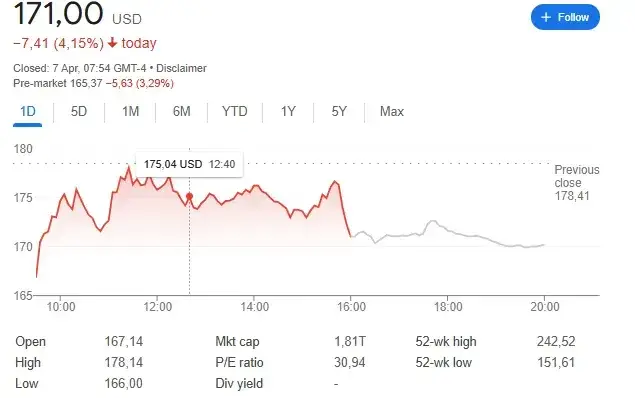Amazon’s stock dip has investors buzzing as the e-commerce giant’s shares fell about 13% during last week’s market sell-off. This significant decline has actually renewed interest in the company, especially as Cathie Wood makes some pretty bold moves to increase her Amazon investment. With the 7% dip creating potential buying opportunities at the time of writing, many investors are analyzing whether AMZN is a buy and also trying to understand what this might mean for their portfolios.

Also Read: Crash to Cash: Warren Buffett’s Bear Market Playbook Revealed!
Amazon Stock Forecast, Cathie Wood’s Bet, and Buy Signals Explained

Cathie Wood’s Strategic Amazon Investment
Cathie Wood‘s Amazon investment caught quite a bit of attention as the Ark Invest CEO went ahead and bought additional AMZN shares during Friday’s market decline. The Amazon stock dip of nearly 30% from its all-time high, which was set just about two months ago, apparently presented an opportunity that Wood simply couldn’t resist. Her investment strategy often involves buying innovative companies during market downturns, and Amazon seems to fit right into that approach.
Current Financial Performance
Amazon’s recent quarterly results showed some surprising strength despite the ongoing Amazon stock dip. Net sales rose by 10% to $187.8 billion, while operating profit surged an impressive 61% to $21.2 billion. However, the guidance for Q1 2025, which is projecting just a 5-7% sales growth, has contributed to some investor concerns.
Also Read: Ripple: AI Predicts XRP Price For April 12, 2025
Wall Street remains optimistic about Amazon’s future, with many analysts expecting an 8% sales growth and also a 40% bottom-line improvement in the upcoming reports.
Is AMZN a Buy Now?
When evaluating if AMZN is a buy now, investors really must consider the recent tariff announcements that are affecting Amazon’s business model. The Amazon stock dip reflects growing concerns over the elimination of de minimis exemptions, which will impact third-party sellers who source products from international markets.
Amazon’s e-commerce platform generates plenty of revenue from goods sourced outside of the U.S. However, Amazon Web Services (AWS) remains a bright spot for the company, actually producing about 58% of operating profits in 2024. This division isn’t nearly as affected by the tariff issues as the e-commerce side of the business.
Amazon Share Price Analysis and Future Outlook
The Amazon share price analysis shows a stock that’s trading at a pretty significant discount from its recent highs. The current Amazon stock dip could represent an entry point for long-term investors who are focused on the Amazon stock forecast for 2025. Cloud computing growth appears to be a critical driver for future performance, and this is something that shouldn’t be overlooked.
Also Read: XRP vs Solana: 76% vs 11% Growth Potential – Which Crypto Wins in 2025?
While the e-commerce side faces some headwinds from tariffs right now, AWS provides some insulation against these challenges. Also, the company’s bid to acquire TikTok adds another interesting dimension to its future growth potential.
Investment Timing Considerations
For investors watching the Amazon stock dip, Cathie Wood’s purchases signal confidence in Amazon’s ability to navigate through the current challenges. The company’s dominant position in e-commerce and its profitable cloud division provide a foundation for growth despite all the “is AMZN a buy now” questions floating around.
This Cathie Wood Amazon investment approach of buying during market downturns may prove to be quite prescient if Amazon’s long-term growth drivers remain intact. With the Amazon stock forecast for 2025 suggesting AWS-driven growth, the current dip might just represent an opportunity for patient investors who can weather some short-term volatility.






